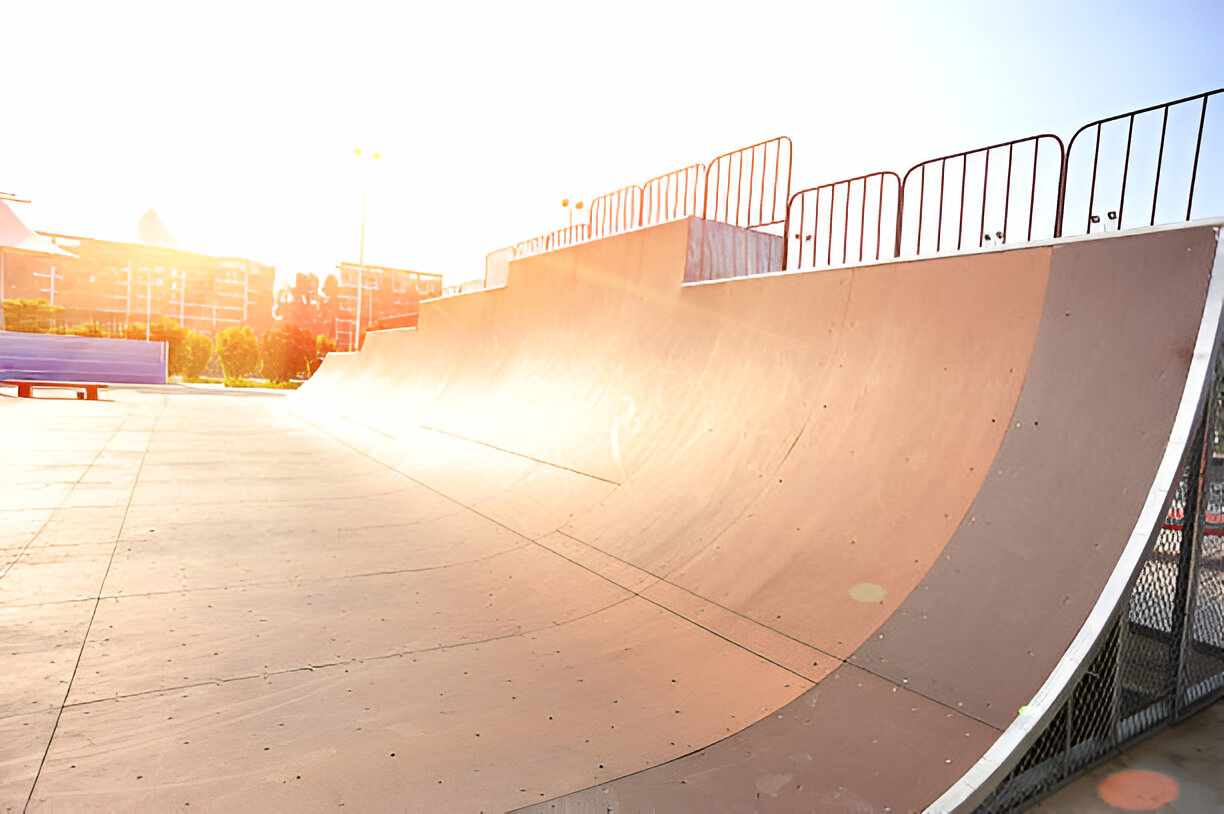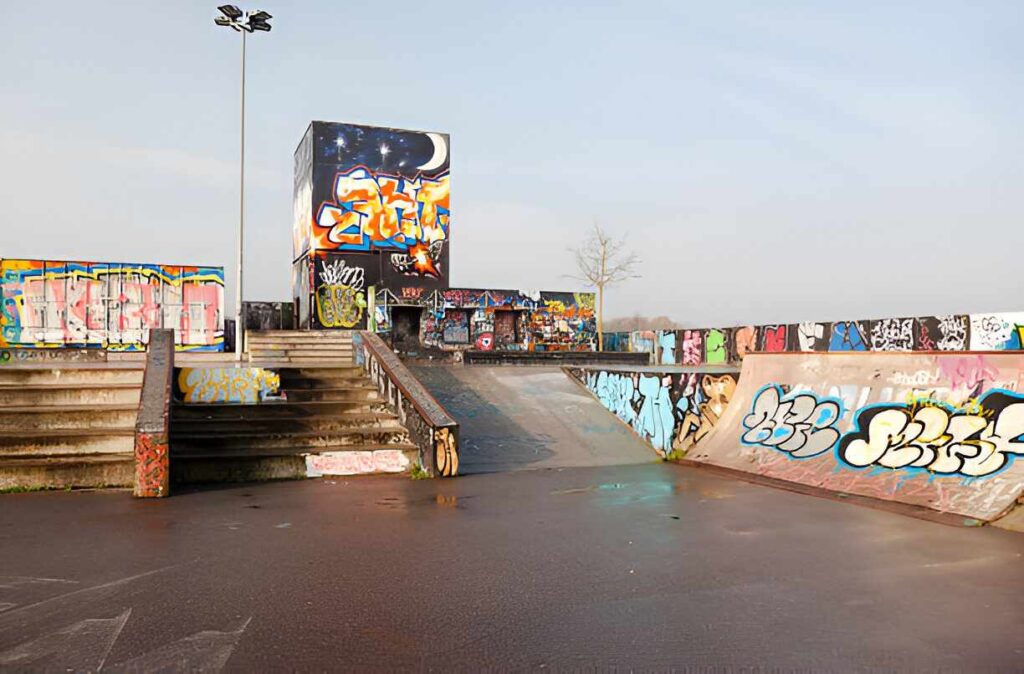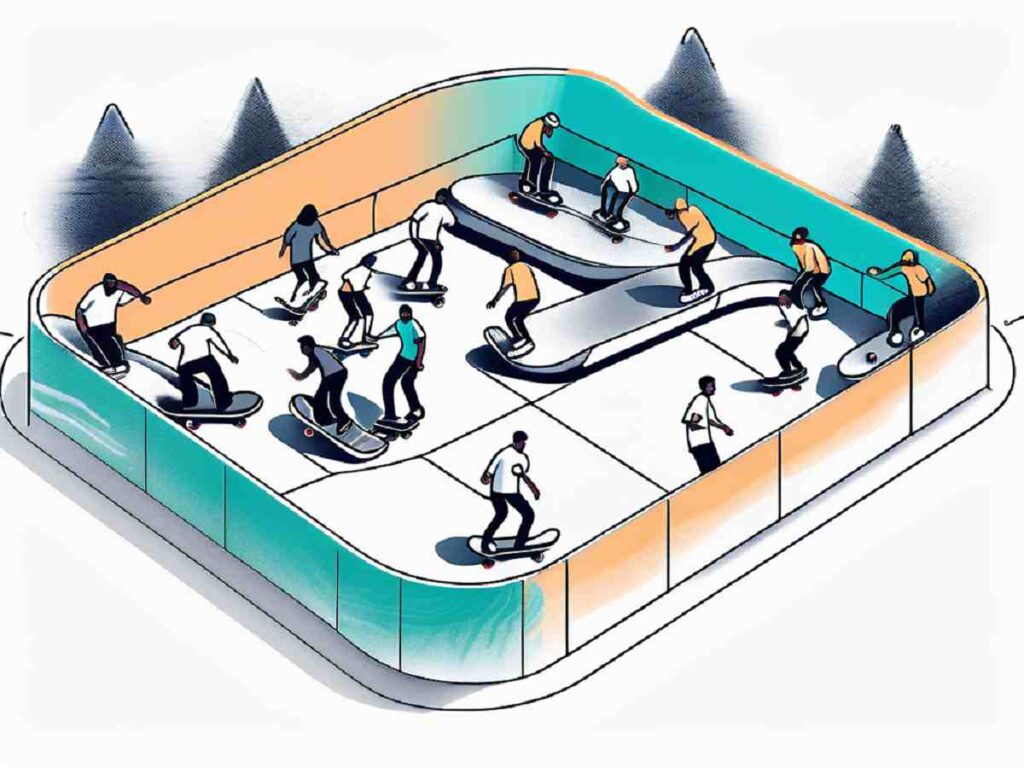
Unique custom designs on Tech Deck skateboards.
What is tech deck skate park?
A Tech Deck Skate Park refers to miniature skateboarding environments designed for finger skateboards, specifically Tech Deck brand boards. These parks serve as realistic representations of real-life skateboarding locations and offer enthusiasts a chance to engage in creative play, practice tricks, and showcase their skills. For both kids and adults, building and designing their own skate parks brings added enjoyment to this unique hobby.
The Evolution of Tech Deck Skate Parks
Since their inception in the late 1990s, Tech Deck fingerboards have gained significant popularity among skateboard enthusiasts and collectors. Initially, Tech Decks were simple toys, but they quickly evolved into intricate fingerboarding setups. As their popularity surged, so did the demand for accompanying skate parks.
The evolution of Tech Deck skate parks can be traced back to the basic ramps and rails that were first introduced. As technology advanced and interests shifted, the designs became more complex, featuring a range of obstacles and multi-level layouts that mimic real-life skate parks. Manufacturers started incorporating unique features, including realistic textures and durable materials, enhancing the overall experience.
Today, the Tech Deck skate park has transformed into an art form, with enthusiasts constructing elaborate setups that rival real skate parks. Communities have emerged around this hobby, celebrating innovation, creativity, and collaboration. Online forums and social media platforms have become vibrant spaces where fingerboarders share their designs, tricks, and tips, fostering a sense of camaraderie and competition. Events like fingerboard competitions and meet-ups have also gained traction, further solidifying the culture surrounding Tech Decks and their parks.
Essential Features of a Tech Deck Skate Park
To create an engaging and functional Tech Deck skate park, several essential features should be considered. These elements not only enhance playability but also offer a true-to-life experience for fingerboard enthusiasts.
- Ramps: An assortment of ramps in varying heights allows for different types of tricks and stunts. These ramps can be curved, quarter-pipes, or even vert ramps for advanced riders.
- Rails: Grind rails are critical components that enable fingerboarders to practice their grind techniques. They can come in various styles, such as flat bars or ledge-like structures.
- Stairs: Many skate parks include stair sets to challenge riders, simulating real-life skateboarding experiences. Stair configurations can vary, allowing for creativity in trick execution.
- Pools: Miniature pools and bowls provide additional opportunities for tricks, particularly for riders who enjoy carving and grinding.
When assembling a Tech Deck skate park, these features enhance the overall play experience, allowing for creative expression and skill development. Additionally, incorporating themed elements such as graffiti art or urban landscapes can elevate the aesthetic appeal of the park, making it not just a playground but a canvas for artistic expression. Customization options are vast, with many enthusiasts opting to paint their ramps or add unique decals, ensuring that each setup reflects their personal style and creativity. This level of personalization not only makes the parks visually striking but also deepens the connection between the rider and their setup, transforming fingerboarding into a truly immersive experience.
How to Build Your Own Tech Deck Skate Park
Creating your own Tech Deck skate park can be an enjoyable and fulfilling project. Follow these steps to design a park that meets your specifications and style.
- Plan Your Layout: Sketch a design of your desired skate park layout on paper. Consider the space you have available and visualize how you want to arrange the various features.
- Gather Materials: Collect materials such as wood, cardboard, foam, or plastic. You can also recycle old items to create unique features.
- Construct Features: Start constructing ramps, rails, and any other features you planned. Use glue, screws, or tape to secure them together, ensuring durability.
- Paint and Customize: Once you have your basic features built, use paint or stickers to customize your park. Add your favorite logos, patterns, or designs to bring a personal touch.
Building your Tech Deck skate park is not only an enjoyable process but also a great way to enhance your fingerboarding experience. As you work on your park, consider incorporating different types of obstacles to challenge your skills. For instance, adding a quarter pipe can help you practice your aerial tricks, while a grind rail can be perfect for perfecting your grinds and slides. Experimenting with various heights and angles will not only make your park more dynamic but also keep your sessions fresh and exciting.
Additionally, think about the overall theme of your skate park. You might want to create a street-style park with urban elements like benches and stair sets, or perhaps a more traditional skate park vibe with bowls and ramps. The choice of theme can influence the materials you choose and how you decorate your park. Consider using miniature plants or graffiti-style artwork to give it that authentic feel. Engaging in this creative process allows you to express your individuality while also providing a fun environment for you and your friends to enjoy your fingerboarding skills.
Popular Tech Deck Skate Park Designs
Various designs have emerged as popular choices among fingerboard enthusiasts. Some of these famous setups include:
- The Street Course: A design focusing on urban elements, incorporating curbs, benches, and stairs to mimic a cityscape.
- The Bowl: This design features a large, circular bowl that allows for continuous tricks and transitions, favoring those who enjoy carving.
- The Plaza: A versatile setup containing a mix of flat ground, rails, and steps, perfect for freestyle riding.
These popular designs reflect the diversity in fingerboarding and cater to different skill levels and styles.
Tips for Mastering Tricks on Your Tech Deck
As you set up your park and begin practicing, here are a few essential tips to help you master tricks on your Tech Deck:

- Practice Stability: Ensure your fingers are stable and centered on the board while performing tricks. This balance is crucial for executing flips and grinds.
- Learn the Basics: Before diving into advanced tricks, master the foundational moves such as ollies and kickflips, as they form the basis of more complex skills.
- Break Down Tricks: If you struggle with a trick, break it down into smaller components and practice each part separately.
- Watch Tutorials: Utilize online resources like videos for visual demonstrations of techniques, offering valuable insights from experienced riders.
By incorporating these tips into your practice routine, you will develop the skills necessary for more advanced fingerboarding tricks.
The Community Behind Tech Deck Skate Parks
The Tech Deck skateboarding community has flourished since the hobby’s inception. Forums, social media groups, and local meetups have created spaces for fans to connect and share their passions.

Many enthusiasts showcase their park designs and trick skills through videos and photos, fostering a spirit of competition and collaboration. Online platforms have become a hub for inspiration, allowing users to exchange ideas and techniques.
As a result, the culture surrounding Tech Deck skate parks continues to grow, driven by shared experiences and the excitement of fingerboarding.
Comparing Tech Deck Skate Parks to Real Skate Parks
While Tech Deck skate parks share several similarities with their real-life counterparts, they also have noteworthy differences. Understanding these aspects can enhance one’s appreciation for both.
- Accessibility: Tech Deck parks can be set up almost anywhere, making them accessible to those who may not have a skateboard park nearby.
- Space Requirements: Unlike traditional skate parks, Tech Deck setups require minimal space, making them ideal for small areas.
- Safety: Fingerboarding minimizes the risk of injury associated with traditional skateboarding, allowing for practice without the significant physical hazards involved.
Overall, while the experience differs, both forms of skateboarding offer unique thrills and opportunities for creativity and skill development.
The Role of Tech Deck in Skateboarding Culture
Tech Deck has embedded itself deeply within skateboarding culture, serving both as a toy and a medium for artistic expression. For many, it represents an approachable entry point into the world of skateboarding.
Through various collaborations with real skateboard brands and riders, Tech Deck has made strides in promoting skateboard culture. Events, contests, and unique fingerboard designs have created a bridge between traditional skateboarding enthusiasts and those attracted to the smaller scale of fingerboarding.
This relationship acknowledges both cultures while promoting inclusivity and encouragement for aspiring skaters.
Future Trends in Tech Deck Skate Parks
As the world of fingerboarding evolves, several trends are beginning to take shape in Tech Deck skate parks:
- 3D Printing: This technology allows enthusiasts to create custom park features and parts, enhancing creativity and personalization.
- Smart Tech Integration: Some creators are looking into integrating technology, like sensors and apps to enhance the fingerboarding experience.
These trends reflect an ongoing commitment to innovation within the Tech Deck community, ensuring that fingerboarding remains dynamic and exciting.
Conclusion
Tech Deck skate parks offer a rewarding avenue for creativity, skill development, and community engagement. From their humble beginnings to the elaborate setups available today, these miniature parks have captured the hearts of many.
Whether you’re a beginner learning tricks or an advanced rider pushing the boundaries of fingerboarding, there’s always room for growth and creativity in the world of Tech Deck skate parks.
FAQs
Yes, most fingerboards are compatible with Tech Deck features.
Most are not designed to be waterproof, so it’s essential to keep them dry to maintain their integrity.
While not necessary, gluing can help create a more reliable and stable setup.
Absolutely! Many enthusiasts personalize their boards with stickers, paint, and unique designs.
YouTube and social media platforms are excellent resources for discovering tutorials and tips.




